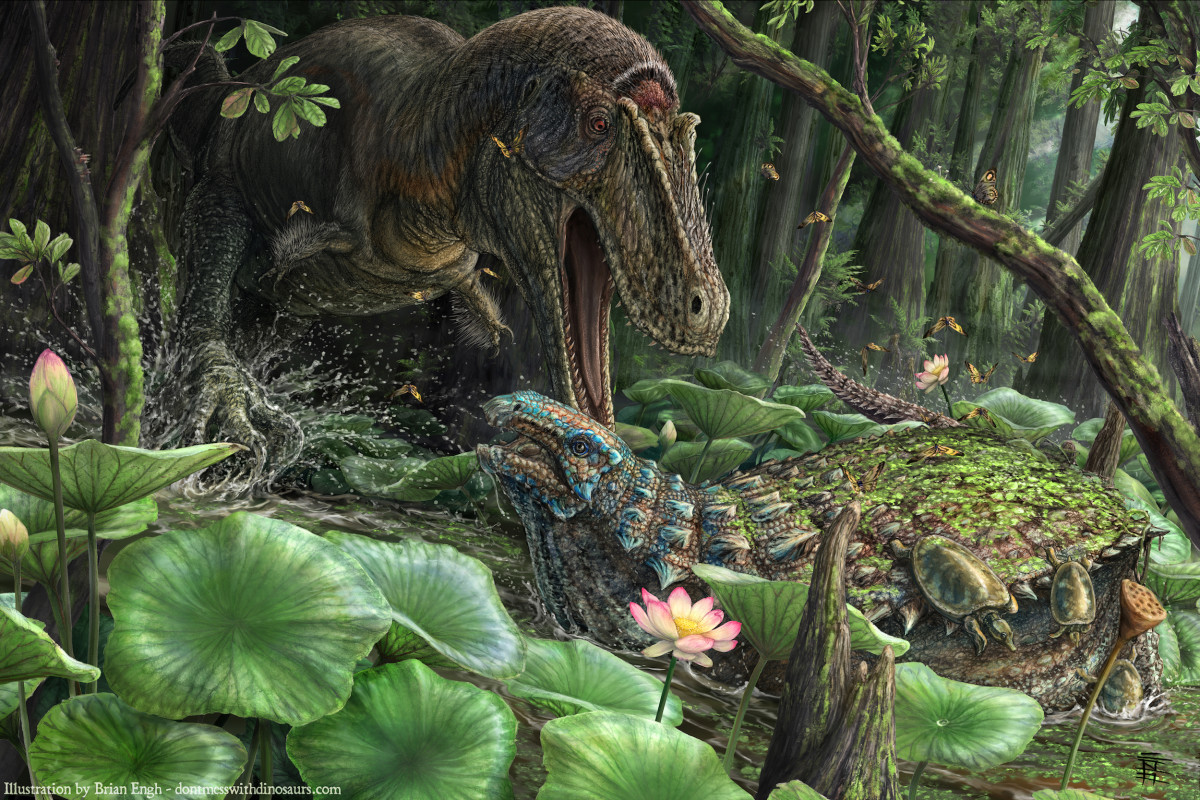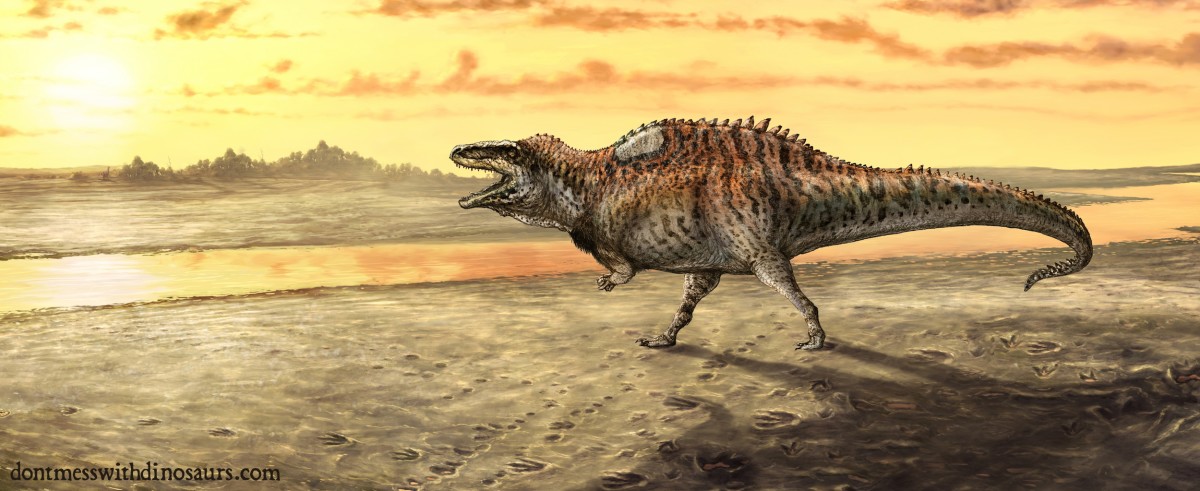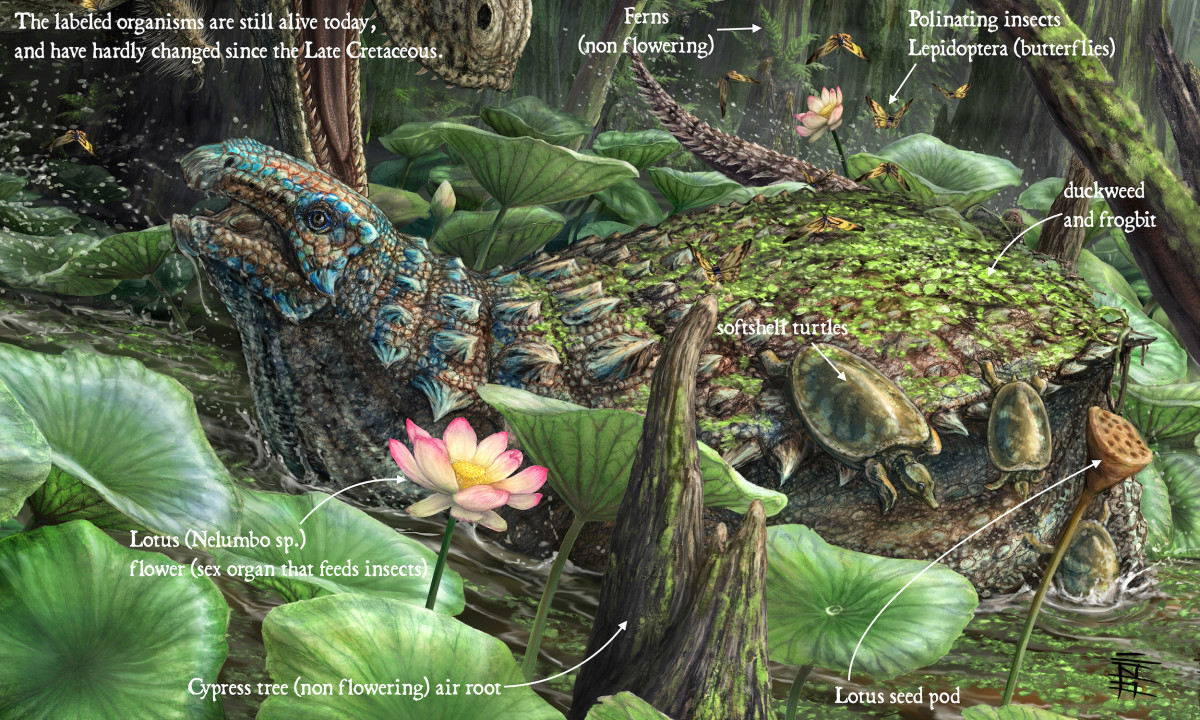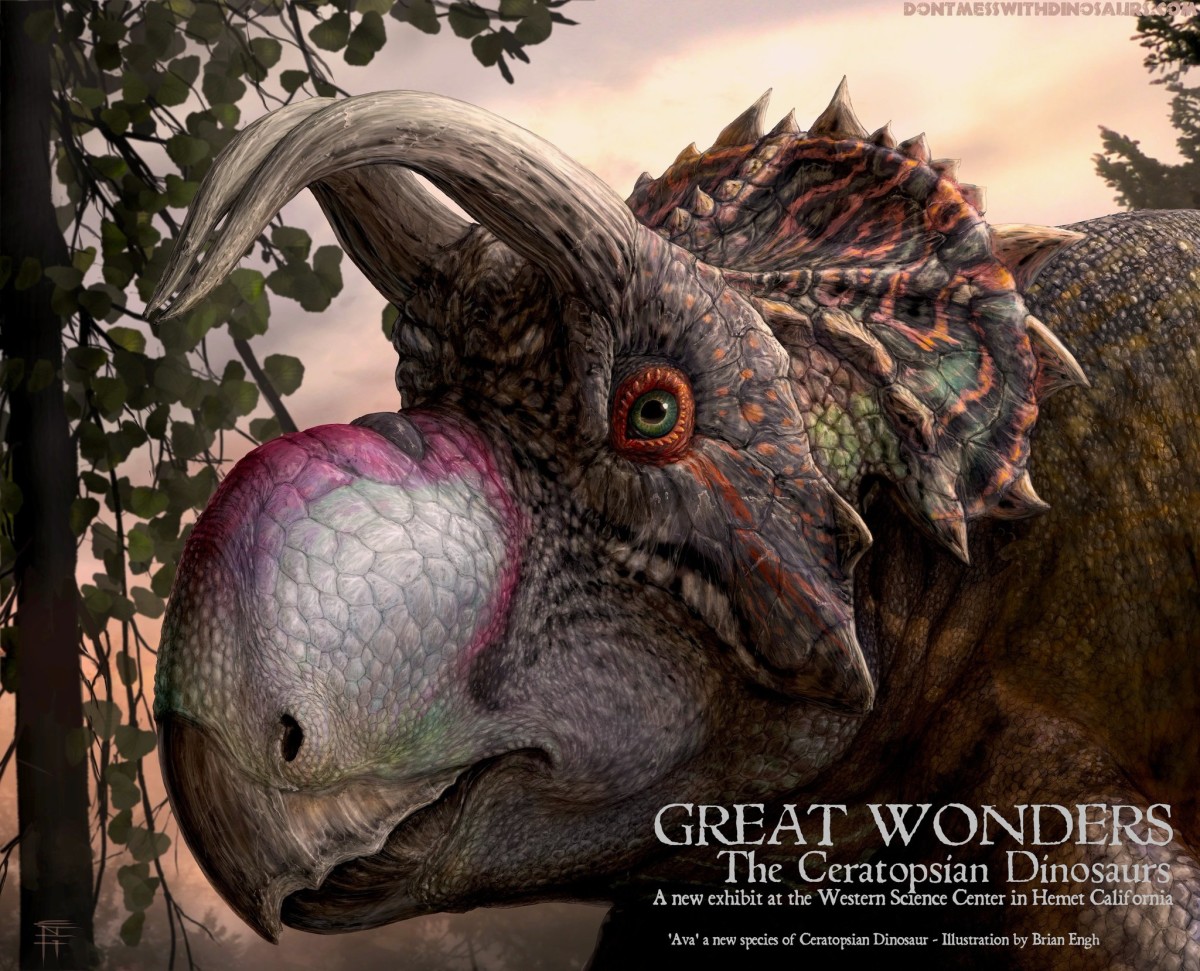A Terror Ruled The Menefee
Dr. Andrew McDonald at the Western Science Center in Hemet CA and Doug Wolfe of the Zuni Dinosaur Institute for Geosciences, Springerville, AZ have been quite busy finding and describing new dinosaurs from the under explored Late Cretaceous Menefee Formation of New Mexico. I have been quite busy helping them bring them back to life. Introducing Dynamoterror dynastes and Invictarx zephyri!
A link to the paper describing Dynamoterror can be found here:
A new tyrannosaurid (Dinosauria: Theropoda) from the Upper Cretaceous Menefee Formation of New Mexico
And you can find the paper describing Invictarx here:
A new nodosaurid ankylosaur (Dinosauria: Thyreophora) from the Upper Cretaceous Menefee Formation of New Mexico
Dynamoterror is a new tyrannosaurid, a member of the same family as T. rex, and at around 80 million years old it’s one of the earliest ones yet found in North America. This is significant because there was a major shift in which predatory dinosaur clade ruled the top predator niche in North America during the Cretaceous period. Before the tyrannosaurs took over they were for a long time much more diminutive. For most of their history tyrannosaurs were small to medium sized dinofuzz-covered beasts living in the shadows of a diversity of huge terrifying flesh eaters descended from the allosauroid lineage, which split off from the tyrannosaurs way way back in the Jurassic Period. Some of the allosauroids, like Acrocanthosaurus (pictured below in at the early cretaceous Mill Canyon Dinosaur Tracksite) got just about as big as the largest tyrannosaurs, but never evolved the ridiculously massively built jaws and fatty banana-thick teeth that derived tyrannosaurs were smashing through armor and bone with.
The allosauroids did however have terrifying jaws lined with razor sharp blade-like serrated teeth which would have efficiently flayed off huge hunks of dinomeat, and which inspired the name of one lineage, the Carcharodontosauridae, which means “shark toothed lizards”. So how did 40+ foot long giant bird-like predatory reptiles with mouths full of sharky/steak knife teeth lose their throne to the “tyrant lizards” (tyrannosaurs)? Nobody knows. But Dynamoterror brings us one step closer to discovering the first tyrannosaurs to evolve large body size.
Perhaps more importantly, the Menefee formation where Dynamoterror and Invictarx were found in New Mexico is a new and highly productive fossil bearing region which gives us a window into the world that early tyrannosaurs rose to dominate as top predators. By studying the changes happening from the upper Jurassic to the Lower Cretaceous and into the upper Cretaceous of the Menefee we can start to speculate about what major shifts in the environment resulted in the downfall of the allosauroids in North America. Intriguingly, one of the major changes we see in the fossil record at this time is the rise of another group of organisms so successful and powerfully altering to the environment that they spread across the entire world in just a few million years, rapidly evolving to enormous size and which may well have shaken the ecosystem so dramatically that giant super predators had no way of coping. The bizarre, rapidly evolving monsters I’m talking about is, of course, flowering plants.
The plant fossils found during this time show us that flowering plants were on the rise and had completely overhauled the entire ecological architecture. Lotus and water lilies and duckweed clogged the watercourses and bogs, a diversity of ficus and other deciduous trees crowded the forest canopy with their broad leaves and littered the forest floor with their innumerable fruit, and all of these flowering plants when blooming wept sweet irresistible nectar which fed swarms of pollinating insects who happily facilitated these photosynthetic monsters bizarre transcontinental orgies by carrying their nutritious and durable sperm packets from nectar oozing plant genital to nectar oozing plant genital.
Early mammals, small dinosaurs and early birds also all got in on the action, gobbling up fruits and seed pods and pooping out the seeds of these new sprawling plants all over the world, rapidly spreading them into new habitats near and far. And this may have affected more than small animals and insects. There is some evidence that sauropod dinosaurs, those long necked supergiants who had adapted so beautifully to crane their lengthy necks up into the boughs of the huge conifer trees that had dominated the worlds forests for so long, appear to have suffered a dramatic decline in North America and Europe during this time. While sauropods appear to have declined, advanced armored dinosaurs like Invictarx, duck billed dinosaurs and the horned ceratopsians flourished and diversified, and many evolved increasingly baroque armaments in the form of spikes, frills, tail clubs and horns. If indeed these new formidable plant eaters arose as a response to a major shift in the plant food available to them, and for some reason tyrannosaurs were better adapted to kill and eat these new plant eaters, then it would seem that (indirectly at least) allosauroids in North America were defeated by flowers.
An exhibit on those bizarre horned dinosaurs that diversified in North America at this time can be seen at The Western Science center, and it features the skull of yet another new species of dinosaur I was commissioned to illustrate by Museum Director Dr. Alton Dooley and Dr. Andrew McDonald. This dinosaur has yet to be named, but has been affectionately nicknamed “Ava” by it’s discoverers at Triebold Paleontology Inc.
If you’re in the southern CA area I hope you’ll swing by the museum. There’s always something interesting going on there, and with all the new fossils they’ve been finding they’ll no doubt be looking for volunteers interested in learning how to do fossil prep.
My thanks go out to Museum Director Dr. Alton Dooley and Curator of Paleontology Dr. Andrew McDonald, as well as their amazing marketing expert/outreach champion/giant ancient monster skull museum selfie model Brittney Stoneburg for all they’ve done to keep me busy illustrating their amazing specimens.
We would also like to acknowledge and thank the Zuni Dinosaur Institute for Geosciences for their help in the field.
If you’d like to see more in-depth behind-the-scenes information on how I make my art, and the process of creating the Ava head reconstruction specifically, check out my patreon page.





Hunter1324 on 09 Oct 2018 at 4:09 pm #
Very interesting blogpost and amazing art. Looking forward to see what else the Menefee Formation has on store :D
dontmesswithdinosaurs.com » Some call her Sarahsaurus, I call her Odd Slothdragon on 10 Oct 2018 at 9:00 pm #
[…] if all the excitement of Dynamoterror being announced yesterday wasn’t enough, a project that has been active in the background for a long time was finally […]
Brian Watkins on 16 Sep 2019 at 1:10 am #
I was the first person to touch the bones of D dynestes and call it a Tyrannosaur… Eric and I discovered the site, and lead the team to the location of fossils. I had a dream of the dinosaur the night before I discovered it with Eric.
~ Brian Watkins, CST.
dontmesswithdinosaurs.com » Reconstructing the new Brachylophosaur Ornatops incantatus on 03 Oct 2023 at 4:16 pm #
[…] Ornatops is the third new dinosaur published from the Menefee formation, which has also yielded the early large Tyrannosaur Dynamoterror dynastes and the armored dinosaur Invictarx zephyri. […]